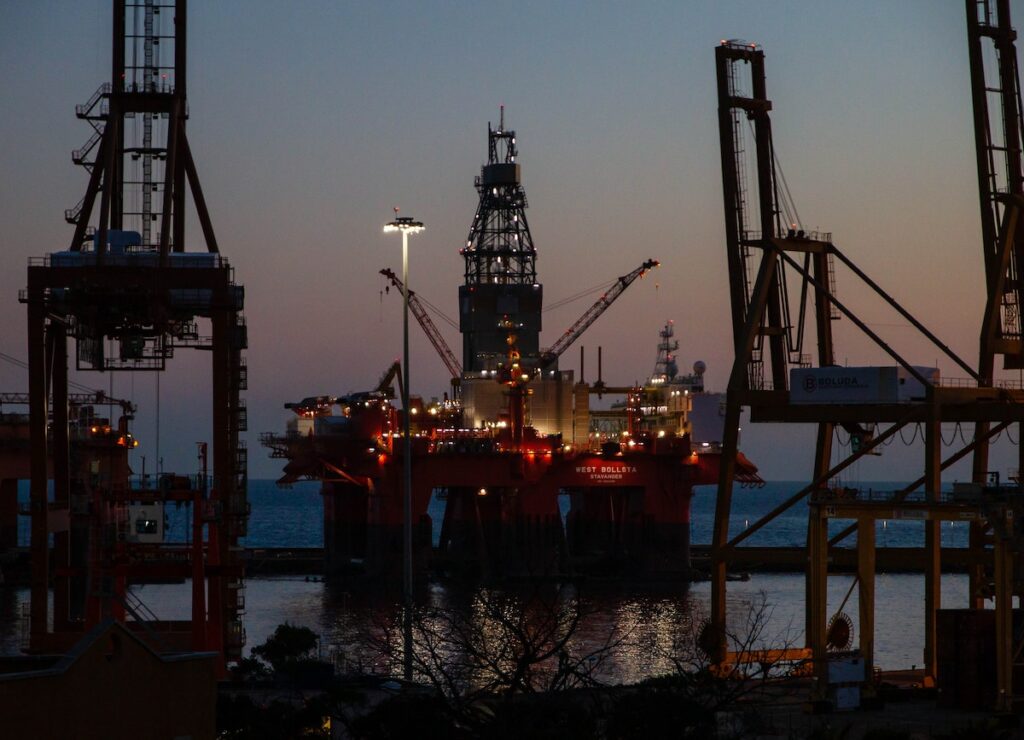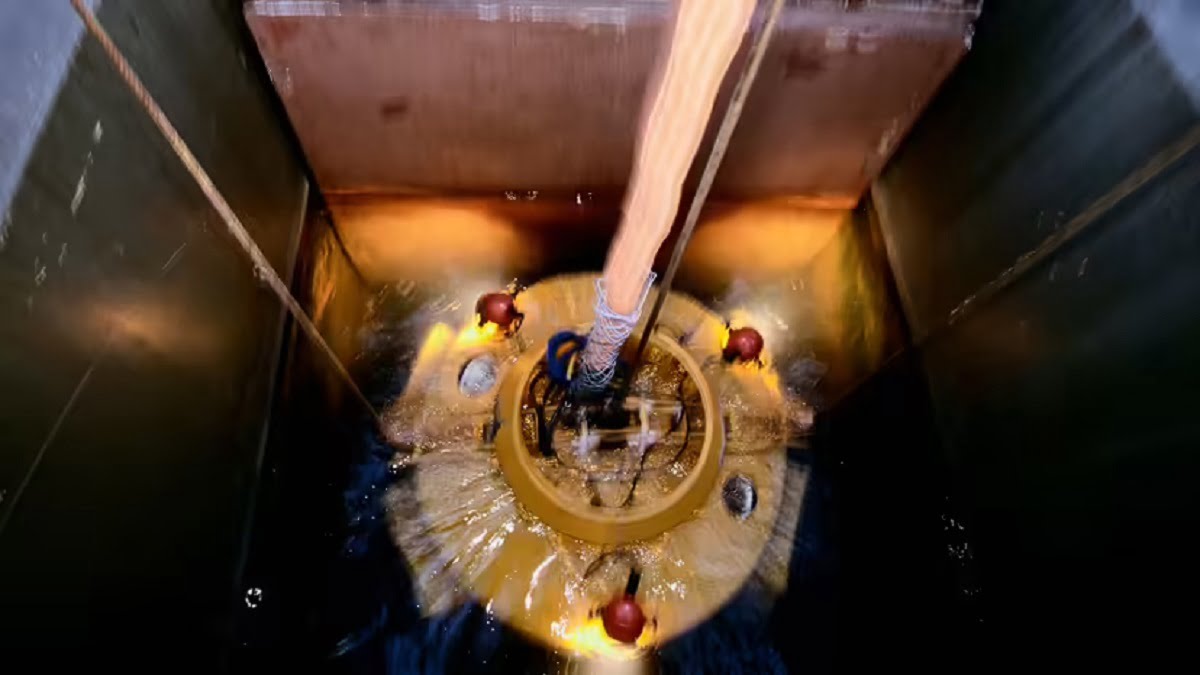The Dolphin Oil Rig Incident has captured global attention as one of the most significant maritime and environmental disasters in recent history. This event not only highlights the dangers of offshore drilling but also raises critical questions about safety protocols, environmental protection, and corporate responsibility. In this article, we will delve into the details of the incident, its causes, consequences, and the measures being taken to prevent similar occurrences in the future.
Offshore drilling operations are inherently risky, and the Dolphin Oil Rig Incident serves as a stark reminder of the potential hazards involved. The incident not only affected the workers on the rig but also had far-reaching consequences for marine life, local communities, and the global energy sector. Understanding the root causes and learning from this tragedy is essential for improving safety standards and minimizing environmental damage.
Our goal in this article is to provide a thorough analysis of the Dolphin Oil Rig Incident, supported by credible data and expert insights. By examining the event from multiple perspectives, we aim to equip readers with a comprehensive understanding of the situation and its implications. Let’s explore the details of this critical event and uncover the lessons it offers for the future.
Read also:Eddies Wifes Name In Christmas Vacation A Comprehensive Guide
Table of Contents
- Overview of the Dolphin Oil Rig Incident
- Causes of the Incident
- Environmental Impact
- Human Consequences
- Economic Effects
- Regulatory Response and Safety Measures
- Technological Advancements in Offshore Drilling
- Future Preventive Measures
- Global Perspective on Offshore Drilling
- Conclusion and Call to Action
Overview of the Dolphin Oil Rig Incident
The Dolphin Oil Rig Incident occurred on [specific date], when the Dolphin oil rig, located in the [specific location], suffered a catastrophic failure. The rig, operated by [company name], was conducting routine drilling operations when an unexpected explosion and subsequent fire erupted, leading to a massive oil spill. The incident lasted for several weeks, with oil spilling into the surrounding waters and causing widespread environmental and economic damage.
This section will provide a detailed timeline of the incident, including the initial explosion, the response efforts, and the eventual containment of the spill. We will also explore the geographical and operational context of the rig, shedding light on the conditions that contributed to the disaster.
Key Facts About the Incident
- Date: [specific date]
- Location: [specific location]
- Operator: [company name]
- Duration: [duration of the spill]
- Volume of Oil Spilled: [approximate volume]
Causes of the Incident
Understanding the causes of the Dolphin Oil Rig Incident is crucial for preventing similar disasters in the future. Investigations into the event revealed several contributing factors, including technical failures, human error, and inadequate safety protocols. The incident highlights the importance of rigorous testing and maintenance of drilling equipment, as well as the need for comprehensive training programs for rig personnel.
In this section, we will analyze the root causes of the incident, drawing on reports from regulatory bodies and expert analyses. We will also discuss the role of corporate culture and decision-making processes in contributing to the disaster.
Primary Causes Identified
- Failure of Blowout Preventer (BOP)
- Inadequate Pressure Monitoring
- Human Error in Emergency Response
Environmental Impact
The environmental consequences of the Dolphin Oil Rig Incident were severe, affecting marine ecosystems, coastal habitats, and wildlife populations. The spilled oil contaminated vast areas of ocean water, leading to the death of countless marine organisms, including fish, seabirds, and marine mammals. Additionally, the oil slick washed ashore, damaging fragile coastal ecosystems and impacting local communities that rely on fishing and tourism.
This section will examine the specific environmental impacts of the spill, including the effects on marine life, water quality, and coastal ecosystems. We will also discuss the long-term consequences of the incident and the efforts being made to restore affected areas.
Read also:Brittney Griner Sex Change Unveiling Facts Myths And The Truth
Short-Term and Long-Term Effects
- Immediate Impact on Marine Life
- Long-Term Damage to Coastal Ecosystems
- Efforts to Mitigate Environmental Damage
Human Consequences
The Dolphin Oil Rig Incident had a profound impact on human lives, both directly and indirectly. Tragically, several workers lost their lives in the explosion, while many others were injured or suffered psychological trauma. The incident also affected the livelihoods of local communities, particularly those dependent on fishing and tourism, as economic activities were disrupted due to the spill.
In this section, we will explore the human toll of the incident, focusing on the loss of life, injuries sustained, and the broader socio-economic impacts. We will also discuss the support systems and compensation programs put in place to assist affected individuals and communities.
Support for Affected Individuals
- Compensation Packages for Families
- Psychological Counseling Services
- Community Support Initiatives
Economic Effects
The economic repercussions of the Dolphin Oil Rig Incident were significant, affecting not only the company involved but also the global energy market. The incident led to a temporary halt in offshore drilling operations, resulting in reduced oil production and increased prices. Additionally, the costs associated with cleanup efforts, legal liabilities, and reputational damage were substantial.
This section will analyze the economic impact of the incident, including its effects on the energy sector, local economies, and global markets. We will also examine the financial implications for the company involved and the measures being taken to address these challenges.
Key Economic Factors
- Impact on Global Oil Prices
- Cost of Cleanup and Remediation
- Legal and Regulatory Penalties
Regulatory Response and Safety Measures
In response to the Dolphin Oil Rig Incident, regulatory bodies around the world have implemented stricter safety standards and oversight mechanisms for offshore drilling operations. These measures aim to prevent similar disasters by enhancing safety protocols, improving equipment reliability, and increasing accountability for operators.
This section will discuss the regulatory changes enacted following the incident, as well as the ongoing efforts to monitor and enforce compliance with safety regulations. We will also explore the role of international cooperation in addressing global offshore drilling challenges.
Regulatory Actions Taken
- Enhanced Safety Standards
- Increased Oversight and Inspections
- Global Collaboration on Offshore Drilling
Technological Advancements in Offshore Drilling
The Dolphin Oil Rig Incident has spurred significant advancements in offshore drilling technology, with a focus on improving safety and reducing environmental risks. Innovations in equipment design, monitoring systems, and emergency response protocols have been developed to enhance the reliability and resilience of offshore operations.
In this section, we will highlight the technological advancements made in response to the incident, showcasing cutting-edge solutions that are helping to transform the offshore drilling industry. We will also discuss the potential future applications of these technologies in other sectors.
Key Technological Innovations
- Advanced Blowout Preventer Systems
- Real-Time Monitoring Technologies
- Automated Emergency Response Systems
Future Preventive Measures
Preventing future incidents like the Dolphin Oil Rig disaster requires a multi-faceted approach that combines technological innovation, regulatory enforcement, and cultural change within the industry. Companies must prioritize safety and environmental responsibility, while governments must ensure that adequate safeguards are in place to protect workers and the environment.
This section will outline the key preventive measures that need to be implemented to minimize the risks associated with offshore drilling. We will also discuss the importance of ongoing research and development in advancing safety technologies and practices.
Recommended Preventive Strategies
- Regular Equipment Inspections
- Comprehensive Worker Training Programs
- Robust Emergency Response Plans
Global Perspective on Offshore Drilling
The Dolphin Oil Rig Incident has raised important questions about the sustainability and safety of offshore drilling operations worldwide. As global energy demands continue to grow, the industry must balance the need for fossil fuels with the imperative to protect the environment and ensure worker safety. This section will provide a global perspective on offshore drilling, examining the challenges and opportunities facing the industry in the years ahead.
We will also discuss the role of renewable energy sources in reducing dependence on fossil fuels and mitigating the risks associated with offshore drilling.
Global Trends in Offshore Drilling
- Increasing Focus on Safety and Sustainability
- Rise of Renewable Energy Alternatives
- International Efforts to Harmonize Safety Standards
Conclusion and Call to Action
The Dolphin Oil Rig Incident serves as a powerful reminder of the risks and responsibilities associated with offshore drilling. By examining the causes, consequences, and lessons learned from this tragedy, we can work towards a safer and more sustainable future for the industry. It is essential for companies, regulators, and communities to collaborate in implementing measures that protect workers, the environment, and the global economy.
We encourage readers to share their thoughts and insights on this critical issue by leaving a comment below. Additionally, we invite you to explore other articles on our site that delve into related topics, such as renewable energy and environmental conservation. Together, we can drive meaningful change and ensure that tragedies like the Dolphin Oil Rig Incident are never repeated.


